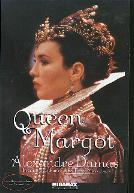St. Bartholomew's Day Massacre
|
|
The St. Bartholomew's Day Massacre (Massacre de la Saint-Barthélemy in French) was a wave of Catholic mob violence against the Huguenots (French Protestants) starting on August 24, 1572, and lasting for several months. It marked a turning-point in the French Wars of Religion by stiffening Huguenot intransigence.
In 1572, a series of inter-related incidents occurred after the royal wedding of Marguerite of Valois to Henry of Navarre, an alliance that strengthened his claim to the throne of France. On 22 August, Catherine de' Medici's agent, a Catholic named Maurevel, attempted to assassinate Admiral Gaspard de Coligny, leader of the Huguenots, in Paris, but succeeded only in wounding him and infuriating the Huguenot party. Then in the early hours of the morning of 24 August, St. Bartholomew's Day, Admiral de Coligny and several dozen other Huguenot leaders were murdered in Paris, a series of coordinated assassinations that could only have been planned at the highest level. That was the signal for a widespread massacre. Beginning on 24 August, and lasting to 17 September, there was a wave of popular killings of Huguenots by the Paris mob, as if spontaneous.
From August to October, similar seemingly spontaneous massacres of Huguenots took place in other towns, such as Toulouse, Bordeaux, Lyon, Bourges, Rouen, and Orléans. Estimates of the number of those murdered range as high as 100,000. Historians generally agree on the figure of 70,000. Among the slain was composer Claude Goudimel.
Contemporary accounts report bodies in the rivers for months afterwards, so that no one would eat fish. Pope Gregory XIII's reaction was jubilant: all the bells of Rome pealed for a public day of thanksgiving, a special commemorative medal was struck, to honor the occasion, and Gregory commissioned Giorgio Vasari to paint a mural celebrating the Massacre. In Paris, the poet Jean-Antoine de Baïf, founder of the Academie de musique et de poésie, wrote a sonnet extravagantly praising the killings. It was not the first such pogrom of the Wars of Religion, nor would it be the last.
Background to the massacres
After the third war in 1570, there was a possibility of peace. The fanatic Catholic House of Guise had fallen from favor at the court and had been replaced by Catholic moderates who were more willing to find a solution to the crisis. The Huguenots were in a strong military position as a result of the Edict of Saint-Germain (August 1570). They controlled the fortified towns of La Rochelle, La Charité, Cognac, and Montauban. Catherine de Medici had hoped that the marriage alliances of her children would support her move for peace, including the proposed marriage of her son the Duke of Anjou (Henry III) and Elizabeth I of England.
By 1571, however, hopes of peace were collapsing. Relations between the Huguenots and the Catholics had deteriorated, and in Rouen on a Sunday in March, forty Huguenots were killed because they refused to kneel in front of the host (the eucharist) during a Catholic procession.
The Guise faction had fallen from favor at the French court, and the Huguenot leader, Admiral Gaspard de Coligny, was readmitted into the king's council in September 1571. The Guises hated de Coligny for two reasons: he was the leader of the Huguenots, and they thought he was implicated in the assassination of Francis, Duke of Guise, in February 1563.
The Catholic fleet assembled under Don John of Austria defeated the Turks at the Battle of Lepanto. This confirmed to the Huguenots that Catholicism could resurge across Western Europe, led by Philip II of Spain. In April 1572, 'Sea Beggars' took control of Brielle thus taking control of Holland. This meant that there was pressure within France to intervene on behalf of the rebels in the Netherlands to prevent a Spanish intervention in France. De Coligny was the main supporter of this intervention. There was then the possibility of either another civil war or a major war against Spain, which was at that time western Europe's greatest Catholic power.
Ostensibly to quell the rancour between the Protestants and the Catholics (the House of Bourbon and the House of Guise), the Queen-Mother, Catherine de Medici, arranged for Henry of Navarre, Duke of Bourbon (the patron of the Huguenots) to marry her daughter Marguerite. The wedding provided an extraordinary occasion to get all of the powerful Huguenots in one place. Catherine therefore planned the massacre of many of the Huguenots while they were in town for the wedding, but she had a hard time convincing her son, King Charles IX of France, to go along, since he had developed a friendly relationship with de Coligny. Finally, after much argument, Charles became furious and lashed out at his mother, commanding the massacre to be done thoroughly if it were to be done at all (in other words, he didn't want to face any retaliation, so he ordered them all to be killed).
The events in fiction
The story was fictionalized by Alexandre Dumas in La Reine Margot, an 1845 novel that is accurate as far as the historical facts go but fills in with romance and adventure between them. That novel was translated into English as Queen Margot and was made into a commercially successful film in 1994.
The massacre was also portrayed in D.W. Griffith's epic silent film Intolerance (1916).
A serial in the British science fiction television series Doctor Who, The Massacre of St Bartholomew's Eve, is set during the events leading up to the Paris massacre. Leonard Sachs appeared as Admiral Coligny and Joan Young played Catherine de' Medici. Sadly, this serial only survives in audio form.
External link
- Brief account (http://www.ronaldbrucemeyer.com/rants/0824almanac.htm) The papal medal and other illustrations.de:Bartholomäusnacht
et:Pärtliöö veresaun fr:Massacre de la Saint-Barthélemy it:Notte di San Bartolomeo nl:Bartholomeüsnacht pl:Noc św. Bartłomieja pt:Massacre da noite de São Bartolomeu sv:Bartolomeinatten zh:圣巴托洛缪大屠杀 ja:サン・バルテルミの虐殺

